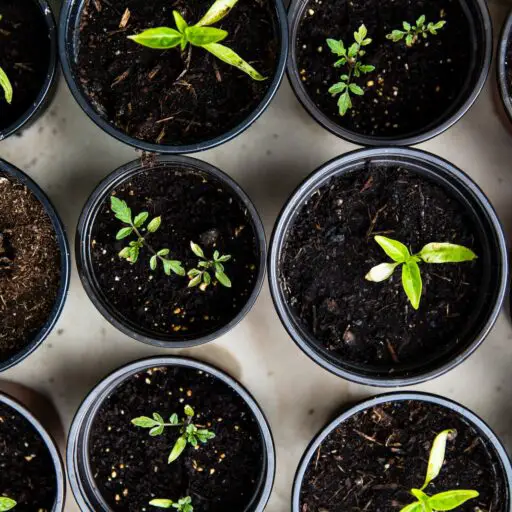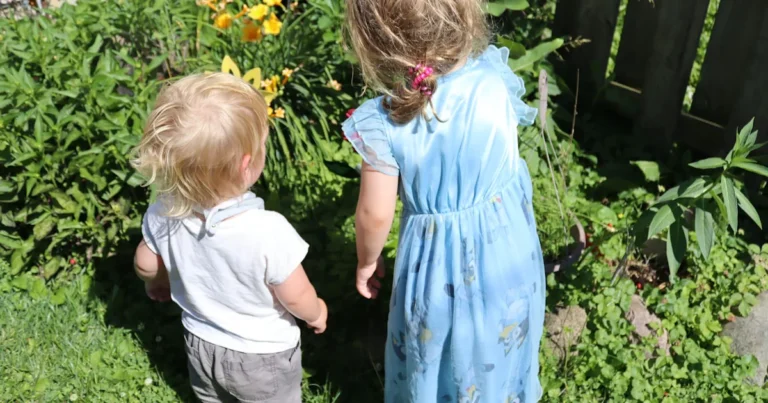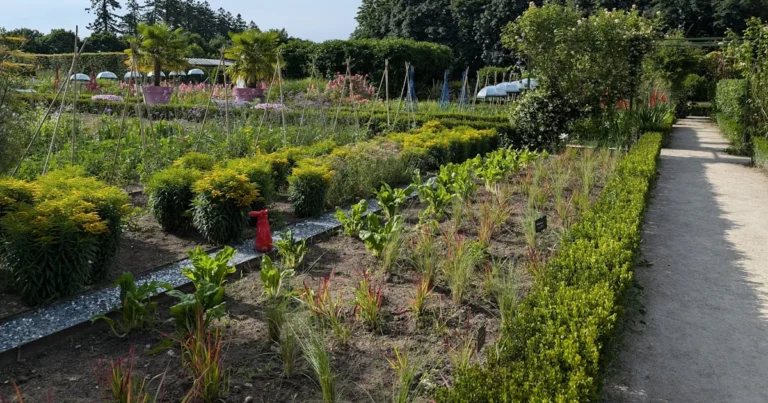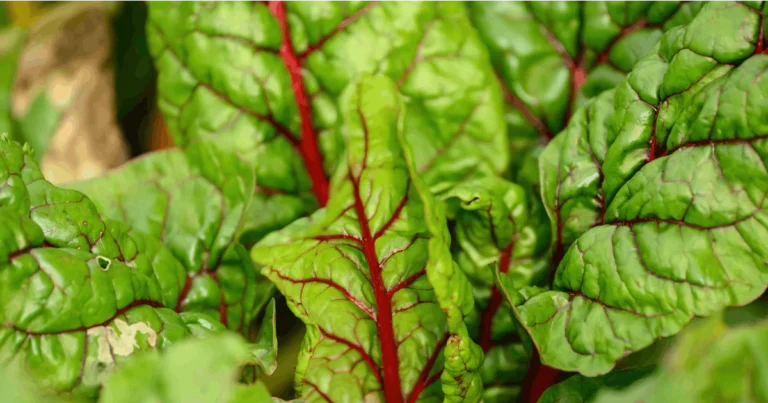Support our educational content for free when you purchase through links on our site. Learn more
Did you know that over half of young people would rather visit a garden center than a nightclub? 🌱 That surprising fact from a recent Draper Tools poll signals a green awakening—and it’s not just the youth catching the gardening bug. Whether you’re a seasoned community gardener or just starting to dream of turning that empty lot into a lush oasis, this article is your ultimate guide to sparking enthusiasm and growing participation in gardens of all kinds.
From making gardens physically and culturally accessible, to gamifying the experience and leveraging social media, we’ve packed 12 expert-backed strategies to help you cultivate not just plants, but a thriving, connected community. Plus, we share inspiring real-life stories and practical tips on tools and outreach that will keep your garden growing strong season after season. Ready to dig in and discover how to turn curious onlookers into passionate green thumbs? Let’s get growing!
Key Takeaways
- Accessibility is essential: Lower barriers with raised beds, ergonomic tools, and culturally relevant plants to welcome everyone.
- Education fuels confidence: Hands-on workshops, seed swaps, and skill-sharing sessions help novices thrive.
- Community projects build bonds: Shared goals like giving gardens and social events create lasting connections.
- Make it fun and social: Gamification and themed planting days keep motivation high.
- Leverage technology: Use social media, apps, and newsletters to engage and inform your gardeners.
- Tailor programs by age: From tiny trowels to wise weavers, customize activities to fit all generations.
- Overcome common hurdles: Address fears, time constraints, and lack of space with creative solutions.
- Equip your gardeners: High-quality tools from trusted brands like Fiskars and Felco make gardening joyful and efficient.
Ready to gear up? Check out our recommended gardening essentials:
- Fiskars Tools: Amazon | Walmart
- Felco Pruners: Amazon | Felco Official
- Heirloom Seeds: Burpee | Johnny’s Selected Seeds | Seed Savers Exchange
Table of Contents
- ⚡️ Quick Tips and Facts
- 🌱 The Roots of Community: Why Gardening Matters More Than Ever
- Unearthing Enthusiasm: Our Top Strategies for Cultivating Green Thumbs
- Accessibility is Key: Making Gardening Welcoming for Everyone ♿
- Igniting Curiosity: Engaging Educational Opportunities 📚
- Building Bonds: The Power of Community Gardening Projects 🤝
- Fun in the Sun: Gamification and Playful Approaches 🥳
- Beyond the Bloom: Highlighting Holistic Benefits 🧠💪
- Targeting Tiny Trowels & Wise Weavers: Tailored Programs for All Ages 🧒👵
- Seed-to-Table Success: Connecting Gardens to Food Security 🍎
- Digital Dirt: Leveraging Technology for Green Growth 📱
- The Art of the Ask: Effective Outreach and Invitation 📣
- Real-World Green Thumbs: Inspiring Success Stories 🌍
- Your Gardening Toolkit: Essential Gear & Helpful Resources 🛠️
- Weeding Out Worries: Overcoming Common Obstacles to Participation 🚧
- Cultivating Lasting Connections: Keeping the Green Spirit Alive 💚
- Conclusion
- Recommended Links
- FAQ
- Reference Links
⚡️ Quick Tips and Facts
Welcome, fellow earth-lovers, to the Community Gardening™ blog! Before we dig deep into the soil of community engagement, let’s plant a few seeds of knowledge with some quick, bite-sized facts and tips.
| Quick Fact / Tip | Insight |
|---|---|
| Youth Are In! | A Draper Tools poll found that 54% of young people would rather go to a garden centre than a nightclub. The green revolution is here! 🕺💃 |
| Mental Health Boost | Access to green spaces is proven to positively impact mental health, reducing stress and anxiety. As the “Roots to Health Project” found, community allotments help students remain calmer. |
| Start with a Swap | One of the easiest ways to get people involved is by organizing a seed or harvest swap. It’s low-commitment and high-reward! |
| Share the Wealth | Got extra compost? Share it! As one expert notes, “new gardeners will be much more likely to stick with it if your nutrient-rich compost affords them a good harvest their first year.” |
| Go Digital | The hashtag #Gardening has over 263 million posts on TikTok, proving that the digital world is fertile ground for growing a new generation of gardeners. |
| Make it Visible | Planting a garden close to the road can be a fantastic conversation starter. It’s passive promotion at its finest! |
🌱 The Roots of Community: Why Gardening Matters More Than Ever
Let’s be honest, in our hyper-connected, yet often disconnected, world, we’re all craving a bit more… well, grounding. Here at Community Gardening™, we’ve seen it time and time again: a simple patch of dirt can transform a group of strangers into a thriving community. But why is this ancient practice suddenly more vital than ever?
It’s more than just growing pretty flowers or tasty tomatoes (though we’re HUGE fans of both!). It’s about reconnecting—with our food, with nature, and most importantly, with each other. A community garden is a living, breathing metaphor for a healthy society. It requires patience, cooperation, and a shared vision. It’s a place where you can learn practical skills, get some gentle exercise, and soak up that glorious Vitamin D.
More profoundly, it’s a powerful tool for improving mental and physical well-being. The simple act of plunging your hands into the soil can be incredibly therapeutic, a concept backed by the growing field of ecotherapy. It’s a place where, as one community gardener puts it, “you can meet people from all walks of life.” So, how do we get more people to experience this magic? How will you promote gardening in your community? Let’s dig in!
Unearthing Enthusiasm: Our Top Strategies for Cultivating Green Thumbs
Alright, you’ve got the space and the passion, but the plots are looking a little… sparse. Getting people to trade their couches for trowels can feel like a challenge, but we’ve got the secret sauce. Here are our tried-and-true strategies for sparking a gardening craze in your neighborhood.
1. Accessibility is Key: Making Gardening Welcoming for Everyone ♿
The single biggest barrier to entry is often the feeling of “this isn’t for me.” Your mission is to shatter that perception! A truly successful community garden is one where everyone feels they can participate.
- Physical Accessibility: Think beyond the basics.
- ✅ Raised Beds: Install garden beds at various heights. We love the models from Gardener’s Supply Company because they offer waist-high options perfect for those who can’t kneel.
- ✅ Smooth Pathways: Ensure paths are wide and smooth enough for wheelchairs, strollers, and wagons. Compacted gravel or paved surfaces are fantastic.
- ✅ Ergonomic Tools: Stock a communal shed with lightweight, long-handled, and ergonomic tools. Brands like Fiskars offer excellent options designed to reduce strain.
- Financial Accessibility:
- ❌ High Plot Fees: Keep fees low or offer a sliding scale.
- ✅ Tool Libraries: Create a shared library of essential tools so no one has to make a big upfront investment.
- ✅ Seed Donations: Partner with local nurseries or organizations like the Seed Savers Exchange to provide free starter seeds.
- Cultural Accessibility:
- ✅ Multilingual Signage: Is your community diverse? Make sure your signs and welcome materials are, too!
- ✅ Culturally Relevant Plants: Encourage members to grow plants from their own culinary and cultural traditions. This is a fantastic way to foster sharing and learning about different Edible Plants.
2. Igniting Curiosity: Engaging Educational Opportunities 📚
Knowledge is the fertilizer for confidence! Many people are “garden-curious” but terrified of killing every plant they touch. (We’ve all been there!) Education is your secret weapon.
- Host Workshops: Make them fun and hands-on!
- Gardening 101: Cover the absolute basics—soil, sun, and water.
- Compost Kings & Queens: Demystify the art of creating “black gold.”
- Preservation Power: Teach canning, pickling, and drying. This is a great way to show the long-term Benefits of Community Gardens.
- Start a Seed Swap: This is a brilliant idea we’ve seen work wonders. It’s a low-key event where gardeners can trade seeds and, more importantly, advice. It’s a perfect opportunity for a seasoned gardener to share their prize-winning “Bloody Butcher Corn” seeds and the story behind them.
- Skill-Sharing Sessions: Empower your members to be the teachers. Does Maria know the secret to vanquishing aphids? Ask her to lead a 15-minute demo! Does Tom have a knack for building trellises? Make it a group project!
3. Building Bonds: The Power of Community Gardening Projects 🤝
While individual plots are wonderful, communal projects are the glue that holds a garden community together. These shared goals foster teamwork and create visible, collective achievements.
- Create a Communal Herb Spiral: It’s a beautiful and functional piece of Garden Design Ideas that provides a variety of herbs for everyone to share.
- Plant a “Giving Garden”: Designate a large plot where everything grown is donated to a local food pantry or shelter. This connects the garden to the wider community and gives members a powerful shared purpose.
- Organize Socials: It’s not all work and no play! Host regular Community Garden Events like potlucks, harvest festivals, or simply a “Sip and Weed” evening. These events build the personal connections that keep people coming back.
4. Fun in the Sun: Gamification and Playful Approaches 🥳
Who said gardening has to be serious? Inject a dose of playfulness to keep things exciting and encourage friendly competition.
- The Great Zucchini Weigh-Off: A classic for a reason! Give a prize for the most absurdly large zucchini.
- Garden BINGO: Create BINGO cards with squares like “Spotted a ladybug,” “Shared a tool,” “Learned a new plant name,” or “Brought a friend.”
- Themed Planting Days: Have a “Salsa Garden Day” where everyone plants tomatoes, onions, cilantro, and peppers. Or a “Three Sisters” day to plant corn, beans, and squash together, honoring Indigenous farming practices.
5. Beyond the Bloom: Highlighting Holistic Benefits 🧠💪
Sure, the fresh veggies are a great perk, but the benefits run so much deeper. When promoting your garden, shout these from the rooftops!
- Mental Wellness Garden: Frame the garden as a place for mindfulness and stress relief. As experts point out, “gardening is the perfect way to relax and unwind from the stresses of daily life.”
- Outdoor Gym: Remind people that digging, weeding, and watering are fantastic forms of low-impact exercise.
- Family Bonding Zone: Position the garden as a screen-free activity where families can connect and learn together.
6. Targeting Tiny Trowels & Wise Weavers: Tailored Programs for All Ages 🧒👵
A one-size-fits-all approach rarely works. Tailor your outreach and activities to specific demographics.
- For the Youngsters:
- Give them ownership! Let them have their own small pot or section of a bed.
- Start with “magic” plants that grow quickly and have dramatic results. Sunflowers are a fantastic choice as they can grow up to 3 meters!
- For indoor fun, you can’t go wrong with a nearly indestructible Spider Plant or a Snake Plant, which is known for its air-purifying qualities.
- For the Teens & Young Adults:
- Connect gardening to their interests: sustainability, climate action, social justice (food security), or even aesthetics for their social media feeds!
- Remember that TikTok trend? Encourage them to document their gardening journey online.
- For Seniors:
- Focus on the social and therapeutic aspects.
- Ensure there are plenty of shaded seating areas.
- Leverage their wisdom! Create a “Garden Mentors” program where experienced older gardeners can share their lifetime of knowledge.
7. Seed-to-Table Success: Connecting Gardens to Food Security 🍎
For many, the most powerful incentive is the promise of fresh, healthy, and affordable food. Make this connection explicit.
- Cooking Demos: Host on-site cooking demonstrations using freshly harvested produce. What do you do with all that kale? Show them!
- Harvest Swaps: As suggested by Southern Exposure’s blog, organize a formal swap where people can trade their bounty. To make it more inclusive, allow non-gardeners to bring baked goods or crafts to trade.
- Free Produce Stand: Set up a “take what you need, leave what you can” stand at the garden’s entrance. It’s a beautiful act of community generosity that can inspire passersby to get involved.
8. Digital Dirt: Leveraging Technology for Green Growth 📱
Don’t be afraid to get techy! The digital world is a powerful tool for organization, education, and outreach.
- Social Media Showcase: Create vibrant Instagram and Facebook pages. Post beautiful photos of the garden, share success stories, and announce events. Use those popular hashtags!
- Communication is Key: Use a simple newsletter (we love Mailchimp) or a group chat on an app like WhatsApp to keep everyone informed about workdays, pest alerts, and social gatherings.
- Helpful Apps: Recommend useful apps to your members. PictureThis is fantastic for identifying unknown plants, while Planta can help beginners remember when to water.
- Career Cultivation: Technology also helps us see the bigger picture of the green industry. The first YouTube video embedded in this article, for instance, is a great resource. The video, titled “Glee TV – How to encourage more people to garden retail?”, features insights from HTA President Boyd Douglas-Davies on making garden retail a viable career choice. You can watch it at #featured-video.
9. The Art of the Ask: Effective Outreach and Invitation 📣
You can have the most amazing garden in the world, but it won’t fill up on its own. You need to be proactive and inviting.
- Go Old School: Never underestimate the power of a well-placed flyer in a local library, coffee shop, or community center.
- Personal Invitations: The most powerful tool is a personal ask. Encourage your members to invite their friends, family, and neighbors.
- Talk to Everyone: Be like the enthusiastic gardeners who “talk to anyone who will listen.” If someone pauses to admire your sunflowers, strike up a conversation! You never know who you might inspire.
Real-World Green Thumbs: Inspiring Success Stories 🌍
Sometimes, the best encouragement is seeing that it can be done. Here at Community Gardening™, we’re basically professional story collectors.
Take “The Vacant Lot Avengers” in a neighborhood we advised. A dreary, trash-strewn corner lot was an eyesore for years. A handful of neighbors, led by a retired teacher named Carol, decided they’d had enough. They started with a single raised bed, a wheelbarrow, and a whole lot of determination. They posted their progress on a neighborhood Facebook group. Soon, one bed turned into three. A local hardware store donated lumber. Kids started showing up after school to help water. Today, that lot is a vibrant oasis with over 20 plots, a pollinator garden, and a picnic bench where you can always find someone to chat with. It transformed a space and, in doing so, transformed a community.
Then there’s Marcus, a young software developer who joined his local garden because he wanted to “offset his screen time.” He admitted he didn’t know a weed from a petunia. He was paired with a mentor, an elderly Italian gentleman named Sal. Sal didn’t just teach Marcus how to grow the most incredible San Marzano tomatoes; he shared stories of his childhood garden in Italy. Marcus learned about gardening, but he also found a friendship and a connection to a generation he rarely interacted with.
These stories are the true harvest of community gardening.
Your Gardening Toolkit: Essential Gear & Helpful Resources 🛠️
While passion is the most important ingredient, having the right tools can make the difference between a joyful hobby and a frustrating chore. For beginners, we recommend starting with a few high-quality basics rather than a giant, cheap set.
Here’s our “Can’t-Live-Without-It” starter kit:
- Hand Trowel: For digging small holes for planting seeds and starts. The Fiskars Ergo Trowel is a team favorite for its comfortable grip.
- Gardening Gloves: Protect your hands! We love the durable yet flexible options from Pine Tree Tools.
- Watering Can or Hose with a Gentle Nozzle: A Dramm watering wand provides a soft shower that won’t displace seeds or damage young plants.
- Bypass Pruners: For clean cuts on living plants. You can’t go wrong with a classic pair of Felco 2 pruners—they’re an investment that will last a lifetime.
- A Sturdy Garden Cart: For hauling compost, soil, or your massive harvest. The Gorilla Carts Poly Yard Dump Cart is a workhorse.
- High-Quality Seeds: Good seeds lead to good plants. We have great success with seeds from Burpee, Johnny’s Selected Seeds, and the Seed Savers Exchange for heirloom varieties.
Ready to gear up? You can find these trusty tools at various retailers.
- Fiskars Ergo Trowel: 👉 CHECK PRICE on: Amazon | Walmart
- Felco 2 Pruners: 👉 CHECK PRICE on: Amazon | Felco Official Website
- Gorilla Carts Yard Cart: 👉 CHECK PRICE on: Amazon | Walmart
- 👉 Shop Seeds on: Burpee | Johnny’s Selected Seeds | Etsy
Weeding Out Worries: Overcoming Common Obstacles to Participation 🚧
We’ve heard all the excuses in the book! Let’s proactively address the common worries that keep potential gardeners on the sidelines.
- “But I don’t have a yard!”
This is the #1 reason people think they can’t garden. Our solution: This is the whole point of a community garden! We provide the space. Plus, we can teach you the magic of container gardening for your balcony or patio. You’d be amazed what you can grow in a pot. - “But I have a black thumb… I kill everything!”
Welcome to the club! Every expert gardener has a long list of plants they’ve accidentally sent to the great compost pile in the sky. Our solution: We’ll start you with something easy and confidence-boosting. Think fast-growing perennials like mint or chives, or a tough-as-nails snake plant for your home. Failure is just part of the learning process. - “But I don’t have time!”
Life is busy, we get it. Our solution: Gardening doesn’t have to be an all-or-nothing commitment. We offer different levels of involvement. You can share a plot with a friend, volunteer for a two-hour work session, or just focus on one or two low-maintenance plants. Even 30 minutes a week can make a difference for both the garden and your well-being. - “But I don’t know anyone!”
That’s the best reason to join! Our solution: A community garden is a social club for people who like plants. We design our events and workdays to be friendly and inclusive. We promise you’ll have a new friend (or at least a good conversation) by the end of your first visit.
Cultivating Lasting Connections: Keeping the Green Spirit Alive 💚
Getting people in the gate is one thing; keeping them coming back is the real art. A thriving garden community needs ongoing care, just like the plants.
The key is to nurture the community aspect just as much as the gardening part. This means fostering a sense of shared ownership and pride.
- Consistent Communication: A regular newsletter with member spotlights, upcoming events, and gardening tips is crucial. Share those success stories and photos to inspire everyone!
- Celebrate Everything: Did you finish the new compost bins? Celebrate! Did the first tomato of the season ripen? Celebrate! Create a culture of appreciation for milestones big and small.
- Establish Clear & Fair Policies: Having well-defined Community Garden Policies prevents conflicts and ensures everyone feels respected. Make sure the process for creating these policies is collaborative.
- Empower Your Members: Create small committees for things like events, outreach, or compost management. When people feel a sense of responsibility and ownership, their investment deepens.
Remember, the goal isn’t just to grow plants; it’s to grow friendships, skills, and a resilient, connected neighborhood. The harvest is just a delicious bonus.
Conclusion
Well, there you have it—a full garden bed of ideas, strategies, and inspiration to help you encourage people to get their hands dirty and hearts engaged in gardening. From making your garden accessible and welcoming to leveraging digital tools and crafting playful, social experiences, the path to cultivating a thriving community garden is rich and rewarding.
Remember the stories of Carol transforming a vacant lot and Marcus finding friendship through tomatoes? They show us that gardening is not just about plants—it’s about people, connection, and growth in every sense of the word.
If you take one thing away from this, it’s this: start small, be inclusive, and nurture both the soil and the community. The rest will bloom in time.
And if you’re wondering how to keep the momentum going, revisit the power of communication, celebration, and shared ownership. These are the roots that keep the garden—and the community—thriving season after season.
Ready to get started? Your community garden awaits! 🌿
Recommended Links
Ready to gear up and grow? Here are some of our top picks for tools, seeds, and inspiration to get your garden growing strong:
- Fiskars Ergo Trowel: Amazon | Walmart
- Felco 2 Pruners: Amazon | Felco Official Website
- Gorilla Carts Poly Yard Dump Cart: Amazon | Walmart
- Burpee Seeds: Burpee Official
- Johnny’s Selected Seeds: Johnny’s Official
- Seed Savers Exchange: Seed Savers Official
- Gardener’s Supply Raised Beds: Gardener’s Supply
For further reading and inspiration, check out these gardening books on Amazon:
- The Vegetable Gardener’s Bible by Edward C. Smith
- All New Square Foot Gardening by Mel Bartholomew
- The Community Garden Book by Ben Raskin
FAQ
What are effective ways to motivate community members to participate in gardening?
Motivating community members starts with making gardening accessible and relevant. This means lowering barriers like cost, physical access, and knowledge gaps. Offering workshops, seed swaps, and social events creates entry points that feel welcoming rather than intimidating. Personal invitations and visible gardens near roads or community centers spark curiosity and engagement. Gamification and themed planting days inject fun and friendly competition, keeping motivation high. Finally, emphasizing the holistic benefits—mental health, social connection, fresh food—helps people see gardening as a valuable investment of their time.
How can community gardening improve social connections and well-being?
Community gardening acts as a social glue, bringing together people from diverse backgrounds to work toward a shared goal. It fosters friendships, mentorships, and a sense of belonging. The physical activity and exposure to nature reduce stress and improve mental health, as supported by ecotherapy research. Gardening also encourages responsibility and pride, which boost self-esteem. Social events and communal projects create opportunities for collaboration and celebration, reinforcing positive social bonds and overall well-being.
What activities promote teamwork in a community garden setting?
Teamwork thrives in activities that require collaboration and shared ownership. Examples include:
- Communal Herb Spirals or Pollinator Gardens: These projects need collective planning and maintenance.
- Giving Gardens: Growing food for donation connects gardeners to a larger cause.
- Workdays and Social Events: Coordinated garden maintenance days and potlucks build camaraderie.
- Skill-Sharing Sessions: Members teach each other, fostering mutual respect and cooperation.
- Garden Committees: Small groups managing events, outreach, or composting deepen engagement and responsibility.
These activities create a sense of purpose and interdependence, essential for a vibrant garden community.
How do community gardens foster environmental awareness and education?
Community gardens are living classrooms. They provide hands-on experiences with sustainable practices like composting, water conservation, and organic pest control. Educational workshops demystify these topics and empower gardeners to apply them at home. Growing culturally diverse and native plants promotes biodiversity and respect for local ecosystems. Gardens also highlight the importance of local food production in reducing carbon footprints and enhancing food security. Through these experiences, gardeners become advocates for environmental stewardship in their wider communities.
Reference Links
- Draper Tools Poll on Youth Gardening Preferences: drapertools.com
- Roots to Health Project: roots-to-health.org
- Seed Savers Exchange: seedsavers.org
- Fiskars Gardening Tools: fiskars.com
- Felco Pruners: felco.com
- Gardener’s Supply Company Raised Beds: gardeners.com
- Southern Exposure Seed Exchange Blog: southernexposure.com
- Greenhouses Direct Blog on Encouraging Young People: greenhousesdirect.co.uk
- Community Gardening™ Benefits of Community Gardens: community-gardening.org
- Community Gardening™ Community Garden Events: community-gardening.org
- Community Gardening™ Community Garden Policies: community-gardening.org
- Community Gardening™ Garden Design Ideas: community-gardening.org
- Community Gardening™ Edible Plants: community-gardening.org
Ready to grow your community? Let’s get planting! 🌻





